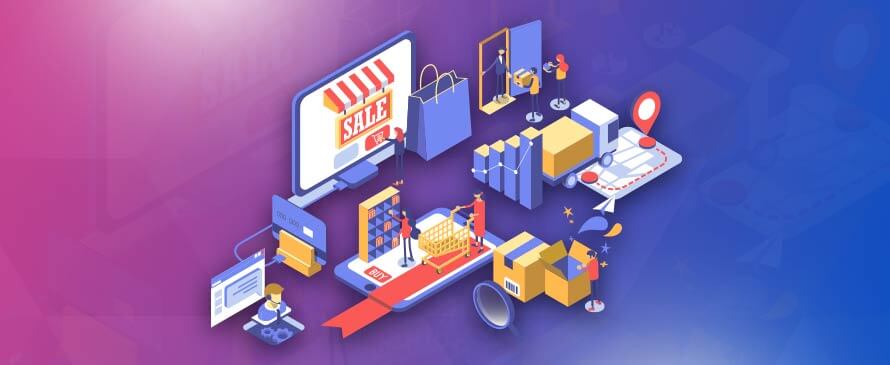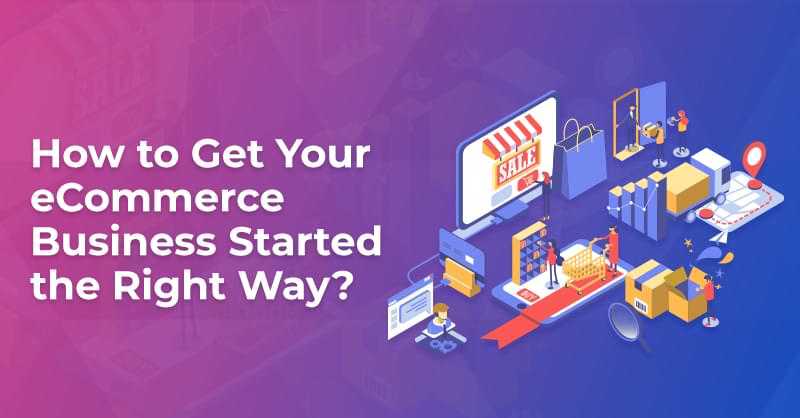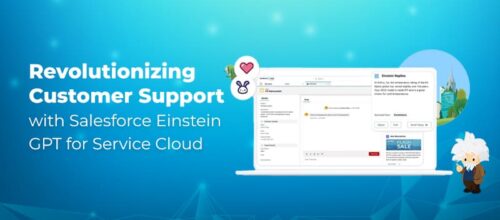How to Get Your eCommerce Business Started the Right Way?

Written by Poonam Chandersy
Technical Content Writer
September 23, 2022
Starting an eCommerce business can be rewarding. However, it can also get complex and requires planning, research, and execution to ensure success. Several processes go into building and selling products online; these include product selection, shipping logistics, and inventory management. As a business owner, starting an eCommerce store can get overwhelming, but having a checklist with all the things needed to build an online store helps generate lasting results. This blog entails all the information a business will need to get started with eCommerce.
Retail E-commerce Sales Worldwide from 2014 to 2025
According to industry statistics, B2B eCommerce site sales are set to reach nearly $1.77 trillion this year in USA alone. This is the highest prediction for eCommerce growth ever. While several major players, including Amazon and eBay, smaller businesses are attracting their fair share of audiences.
Steps to Start an eCommerce Business
From developing a business plan to executing it, an online store demands time and energy at every stage of the way. However, implementing some essential steps helps to scale up an eCommerce business and make the most of it right from the start.
Find a Niche
The key to success for any business is finding the niche that distinguishes it from its competitors. The perfect niche lays the foundation of any eCommerce business, followed by which thorough market research is required. There are two ways to identify a niche:
- Researching a specific demographic and what customers buy the most
- Comparing the data from various niches to identify patterns
The first step includes finding out who the potential customers are, followed by understanding their values, beliefs, and needs that help to provide a glimpse of what kind of products and services they would prefer.
Research and Analyze Competition
It is essential to research and learn everything about your competitors to ensure their prices, products, and services correspond to what you want to offer. A pro tip is to avoid competing against well-established eCommerce sites such as Amazon or Walmart. Instead, look for businesses operating at lower-to-middle levels to get a head start on the marketing and distribution strategies. Analyzing Competitors is a critical aspect. Below are some ways businesses can analyze competitors:
Search social media handles on Facebook or Instagram for information on their products, services, and reviews.
Check out their website for information, prices, product types, etc.
Visit their in-person physical stores to analyze and learn how they operate.
Knowing the competition in store provides a strategic blueprint of how one can build the business.
Validate the Idea and Build a Business Plan
Once the research phase has been completed, the most crucial part of launching the business needs to be worked upon: creating a business plan. This plan is a series of steps and actions determining what needs to be prioritized, how to get started, and how to build business strategies to acquire new customers. Plan out the products, marketing strategies and business finances, operation models, product deliveries, suppliers, and other crucial details. An efficient eCommerce business plan comprises of the following:
- Company Description: This entails information about the business owners, personnel needed, and the type of business model
- Products: The main product line, store products, and the catalog, which much include the suppliers and costs
- Operations: This includes the shipping providers, shipping costs, and warehouse storage
- Market Analysis: Analyze the buyer persona, what they like, and their demographic
- Market Strategy: This strategy includes social media marketing, email marketing, promotions, advertisements, and a defined target audience
- Financial Planning: Determine the operational costs, tools, assets, cost per customer acquisition, and scalability
- Milestones: Establish targets like the first 10 to 100 visitors to the store; such milestones enable businesses to streamline the progress
Select the Ideal eCommerce Platform
The most common question businesses have is where to start their eCommerce business. Although several eCommerce platforms are available in the market, the essential aspect while selecting an eCommerce platform is the critical features and services the platform offers to help the business grow and expand. Below is a list of features to consider while choosing an eCommerce platform for your business:
- Easy Set Up and Design: While every platform is different, go with one that has a user-friendly and intuitive admin panel, as it will be easy to work with and set up shop
- Easy Navigation: Look for a platform that is easily understood by the customers, offering an easy way to view and select products, add them to the cart, and eventually checkout
- Security: Check if the platform offers a secure checkout and has an SSL certificate
- Integrations: Is the platform flexible for third-party apps and service integrations? Integrations such as email marketing, social media, live chat software, CRM software, or user activity monitoring software are standard integrations most businesses implement
- SEO-friendly: Does the platform allow you to choose a domain name, add a blog, and collect customer reviews to ensure it is optimized for SEO
- Inventory Management: Ensure that the platform integrates with inventory management software to assist you with streamlined inventory requirements. Some platforms offer software to manage inventory that enables you to increase profits by making sure there are enough stock items and making operations efficient, all at the same time
- Mobile Optimization: Today, most traffic comes from mobile users. It is essential that the platform is fle.xible and allows the online store’s website or application to be optimized for mobile users to help you gain more customers
- Analytics: Analyze where the traffic is coming from and implement strategies to enhance this traffic. The platform must support tools such as Google Analytics that allow you to view your store insights
- Support and Customer Service: Bugs occur, sites crash, and other problems occur. It is essential to check for the support, and customer service platforms offer to avoid losing money and traffic
- Payment Options: Examine the payment options supported; are they the popular ones? Businesses want to provide their customers with multiple choices to pay for the products
- Price: Based on the budget, decide which platform offers the best price-to-service ratio. While some platforms offer monthly plans, others charge based on the number of transactions or even have add-on features that need to be purchased once the store is set up
Some of the most popular eCommerce platforms in the market today include:

Create Product Listings
Adding product listings to the online store is one of the most crucial and time-consuming tasks. Not only does it need to be attractive and compelling, the price too must be visible and prominent to prevent customers from leaving the site. Offering discounts, coupons, or additional services also help conversions. Good quality product photos from different angles have also proven to be influential during purchase decisions. Below are some suggestions on how to boost conversions through product listings:
- Add social triggers to images to create a sense of urgency and scarcity; these include phrases such as “almost out-of-stock,” “only two left,” or similar triggers
- Add “Call to Action” buttons
- Display Products in Action when applicable
- Show Product Ratings
Consider Shipping Options
Presenting customers with clear shipping conditions is essential in an eCommerce business. Plug-ins play a significant role in this aspect as they offer various shipping and order export features. Ensure you have the option to set up your preferred shipping rules, export the necessary data with an Order Export plug-in, and do much more to offer options to your customers.
Set Up Payment Processing
One of the essential parts of setting up an eCommerce store is to connect and test the payment gateways. A reliable payment gateway platform ensures the payments are fast and secure and provide multiple payment options to customers. Third-party payment providers allow businesses to handle refunds and orders and conduct many other transactions. Each payment gateway accepts different payment methods. Some of the most used payment gateways include:

While each one comes with a specific fee, ensure to compare the options and select the one that is affordable and reliable.
Promote using Social Media & Email Marketing
Social Media platforms have become significant players as consumers use at least one of the platforms. For eCommerce, there are several advantages of promoting products using social media. Users are likelier to recommend a product or brand through social media. Creating a solid social media marketing plan can help any eCommerce business drive traffic back to the eCommerce store. Content marketing, SEO, and email outreach also significantly boost the online store’s reach. Platforms such as MailChimp, and Klaviyo, among many others, can be used to execute email campaigns.
Monitor Customer Feedback
Research says around 93% of customer reviews determine purchases. Collecting and monitoring reviews to check for customer satisfaction help to accomplish different purposes. It is a powerful tool when businesses get started with eCommerce that helps to:
- Improve the Customer Experience such as resolving negative feedback, improving the production line, and providing directions to optimize the store
- Show customers that businesses care by asking for customer feedback
- Helps to increase and optimize conversions
A successful eCommerce launch means the business has taken the critical steps to start. These steps include understanding the best business to start, finding a niche, analyzing the competition, formulating a business plan, which platform to start the business, listing the products accurately, and promoting them on social media. While each step requires careful planning, the business can expand and grow exponentially if done correctly.
Royal Cyber has been associated with the eCommerce industry since the beginning. We also guide clients to the best platform based on the business model, requirements, strategic plan, target audience, and company vision. These goals can range from increasing revenue, improving customer engagement, or even entering a new market. We work with different solutions and technologies and can run accurate analyses based on specific requirements. So contact us and let us help you start your eCommerce business today so you too can benefit from the growing eCommerce industry.




